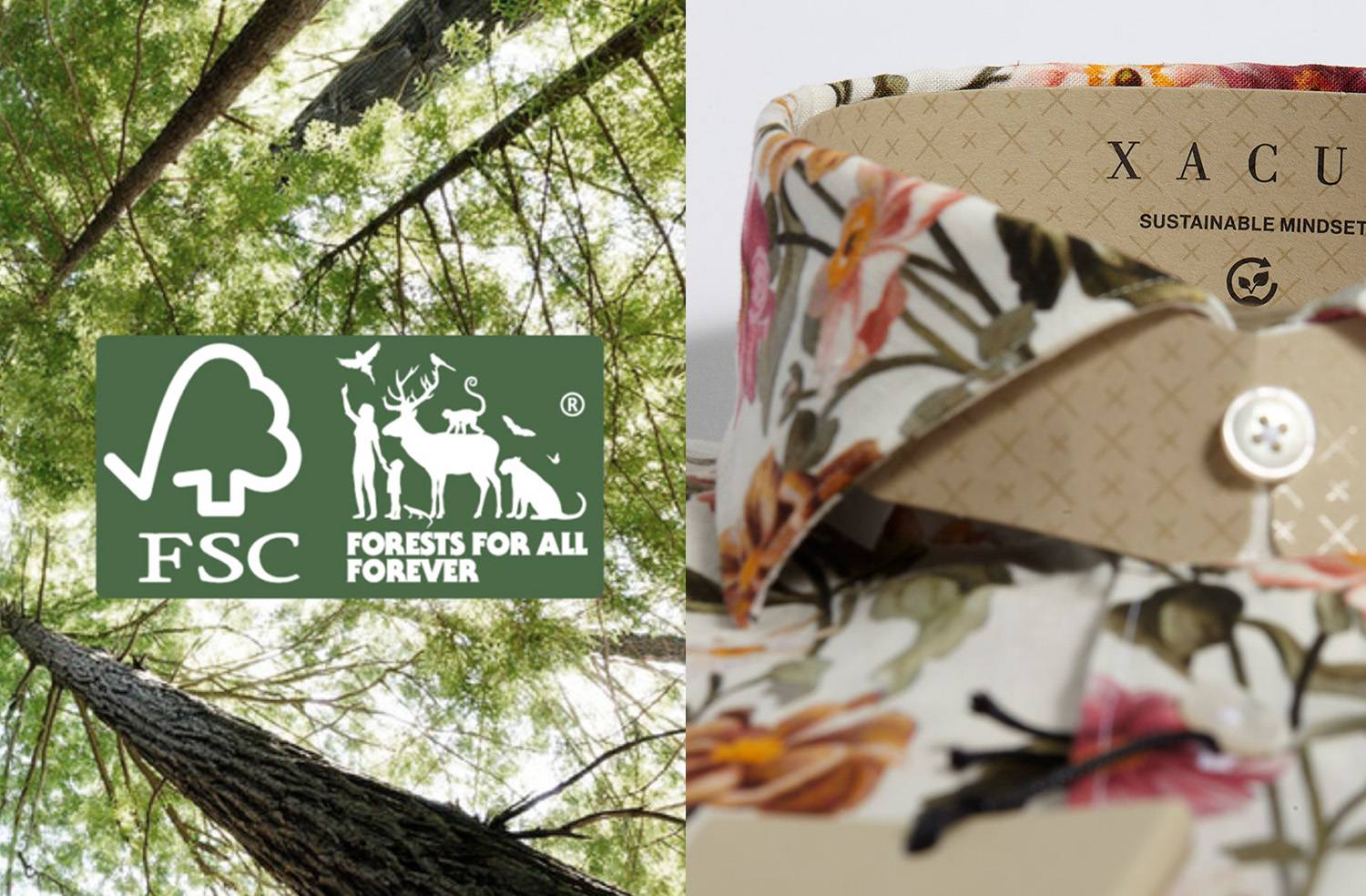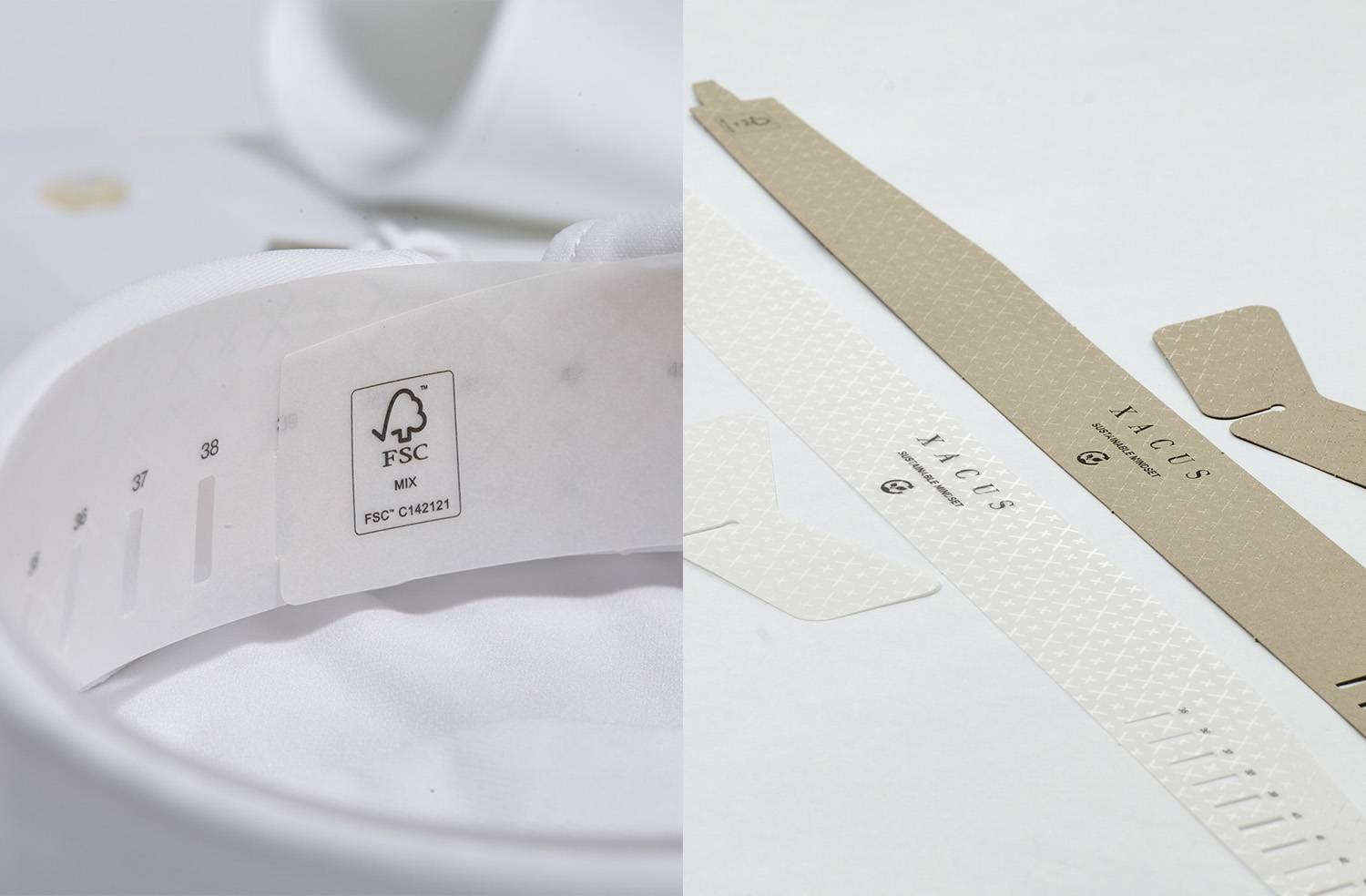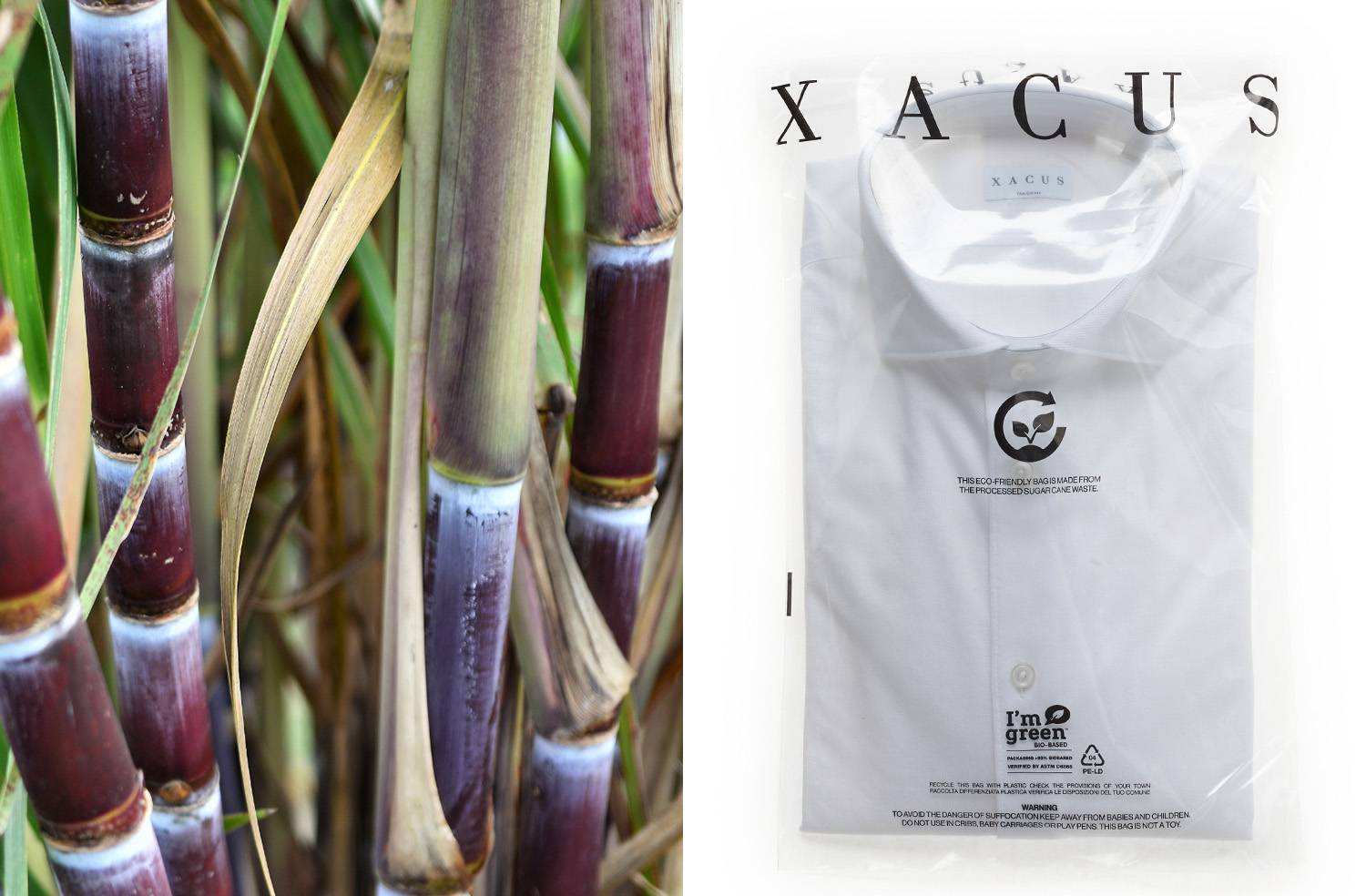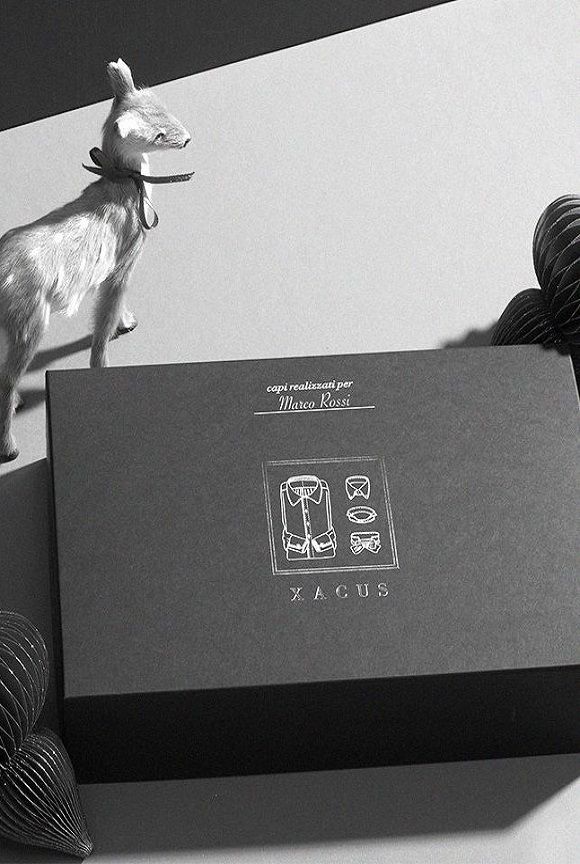

The subject of sustainability has now become a mission for the world’s fashion industry companies, and now increasingly firm measures are being introduced, embracing the manufacturing and distribution supply lines in their entirety.
From the use of organic materials to production systems that will not harm the environment, such as reducing water waste, through to recyclable packaging with a minimum of plastic use or which are even completely plastic free.
At Xacus too, innovation is being used to produce next-generation shirts, where style and quality come together with the use of organic cottons, linens and organically grown mixed hemp fabrics, Econyl polyamides and wools with Zq Merino certification. But it does not stop with yarns: all the accessories on every shirt, such as butterfly collar stays will be made using recyclable materials with FSC certification.


This season, Xacus is committed to choosing only certified paper and card from the FSC chain of custody for its packaging.
The FSC (Forest Stewardship Council) is a non-profit organisation dedicated to responsible management of the world’s forests, and it has developed an internationally recognised system for sustainable forestry and traceability for forestry products. The Chain of Custody (CoC) serves to ensure that FSC-certified material has been identified and separated from non-certified, uncontrolled materials along the supply chain, from the forest through to sale. It is an infallible, highly developed system that connects the end consumer to the environment, while managing the operations of more enlightened companies such as Xacus, in complete safety, with the FSC/CoC mark.
But that is not all.


There is some big news about the transparent bags we use to protect our shirts from UV rays, which now have I'm Green certification. They are made using polymers that come from processing sugar cane waste. A doubly sustainable choice, both because of the product that comes from organic material from the plant, and of the important role of sugar cane in the environment which - planted and harvested every year - actively traps carbon dioxide (CO2) from the atmosphere as it grows, releasing oxygen at the same time and playing its part in reducing greenhouse gas emissions.

